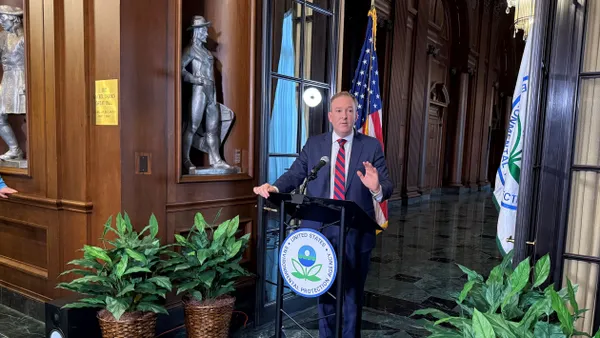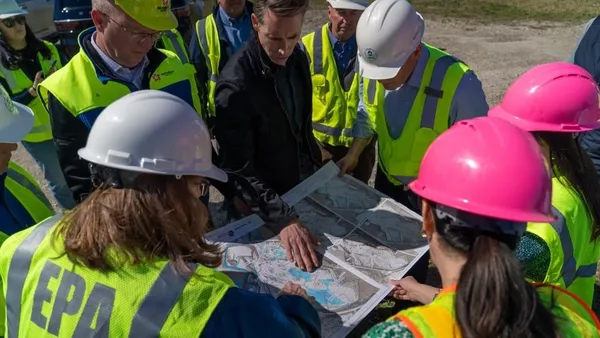Dive Brief:
- Clean Harbors says the incineration system at its hazardous waste incinerator in Aragonite, Utah, can destroy “multiple forms” of PFAS, according to the results of a study conducted for the company that were announced late last year.
- The tests sampled and analyzed how the incinerator handled 49 PFAS from different process streams in the facility, including PFOA, PFOS, PFHxS and Gen-X. Clean Harbors says the incineration process destroyed more than 99.99% of PFAS compounds.
- The results exceed all state and federal ambient air limit standards, Clean Harbors said, and the destruction methods also meet the “strict chemical destruction standards” for some other hard-to-destroy chemicals, like PCBs and dioxins.
Dive Insight:
Clean Harbors says the test results gives the company peace of mind that it is responsibly managing materials the contain the per- and polyfluoroalkyl substances, based on current science.
Yet time will tell whether the study will shed more light on how the overall waste industry should handle PFAS-containing material or whether the information from the study could benefit hazardous waste companies that see PFAS as a possible business opportunity. Clean Harbors has said it has not yet factored growth potential from PFAS into its financial projections.
Incinerating PFAS remains a controversial management method, as some environmental groups say the process can create pollution and harm disadvantaged communities. The U.S. EPA’s guidance on PFAS destruction and disposal lists incineration as the third option after deep well injection and storage at landfills, ranking the methods from lowest to highest uncertainty based on the available scientific research on each.
PFAS management is part of Clean Harbors’ business, and it manages PFAS-containing items in various ways depending on the project, said Paul Bratti, senior vice president of project services. The company recently handled “PFAS impacted” soil from rural Alaska by burying it at its hazardous waste landfill in Oklahoma. However, the company generally prefers to use incineration as a first option and landfilling as a second option. The study results “really solidified” that preference, he said.
“It’s exciting to know incineration can yield those types of results, when there are still so many questions about PFAS and so many concerns in the industry,” he said.
EA Engineering, Science, and Technology and Montrose Environmental Group developed the PFAS destruction test for Clean Harbors in June 2021. The company hired Focus Environmental for technical oversight before publishing the study in November 2022.
The test measured destruction of PFAS from sources throughout the facility, including in its liquid waste streams and stack gas. It also measured destruction of PFAS in waste containing aqueous film forming foam. New York banned the incineration of PFAS-laden AFFF in 2021 over environmental concerns.
The EPA has called for more research on all types of PFAS management, but studies on the efficacy of incineration as a method for destroying PFAS-containing materials are particularly rare, according to a technical brief from the agency. “The extent to which PFAS-containing waste material in the United States is incinerated is not fully documented or understood,” it said.
One reason for the lack of data is that PFAS is not specifically regulated as a hazardous air pollutant under the Clean Air Act, meaning PFAS isn’t tracked the same way other substances are.
New regulations could prompt the agency or other researchers to collect more data or prioritize additional incineration studies, according to the brief. The EPA plans to soon regulate certain PFAS as hazardous substances under the Resource Conservation and Recovery Act, a move landfill operators anticipate might change their procedures.
Clean Harbors sees its PFAS study as an important puzzle piece in the larger picture of how to manage PFAS at landfills, but Bratti said the company will update its operations if the EPA comes out with specific testing or measurement requirements not covered in the study. “We’re open to expanding our research on our facilities and always looking to enhance our systems, so if the EPA required that, we’d have a good look at it,” he said.
EPA also plans to publish more detailed data on PFAS disposal and destruction and update its guidance sometime this year, according to a timeline published in the agency’s PFAS road map. Meanwhile, researchers at Virginia Tech are using an EPA grant to research low-cost techniques to measure hazardous air pollutants and contaminants, including PFAS.














